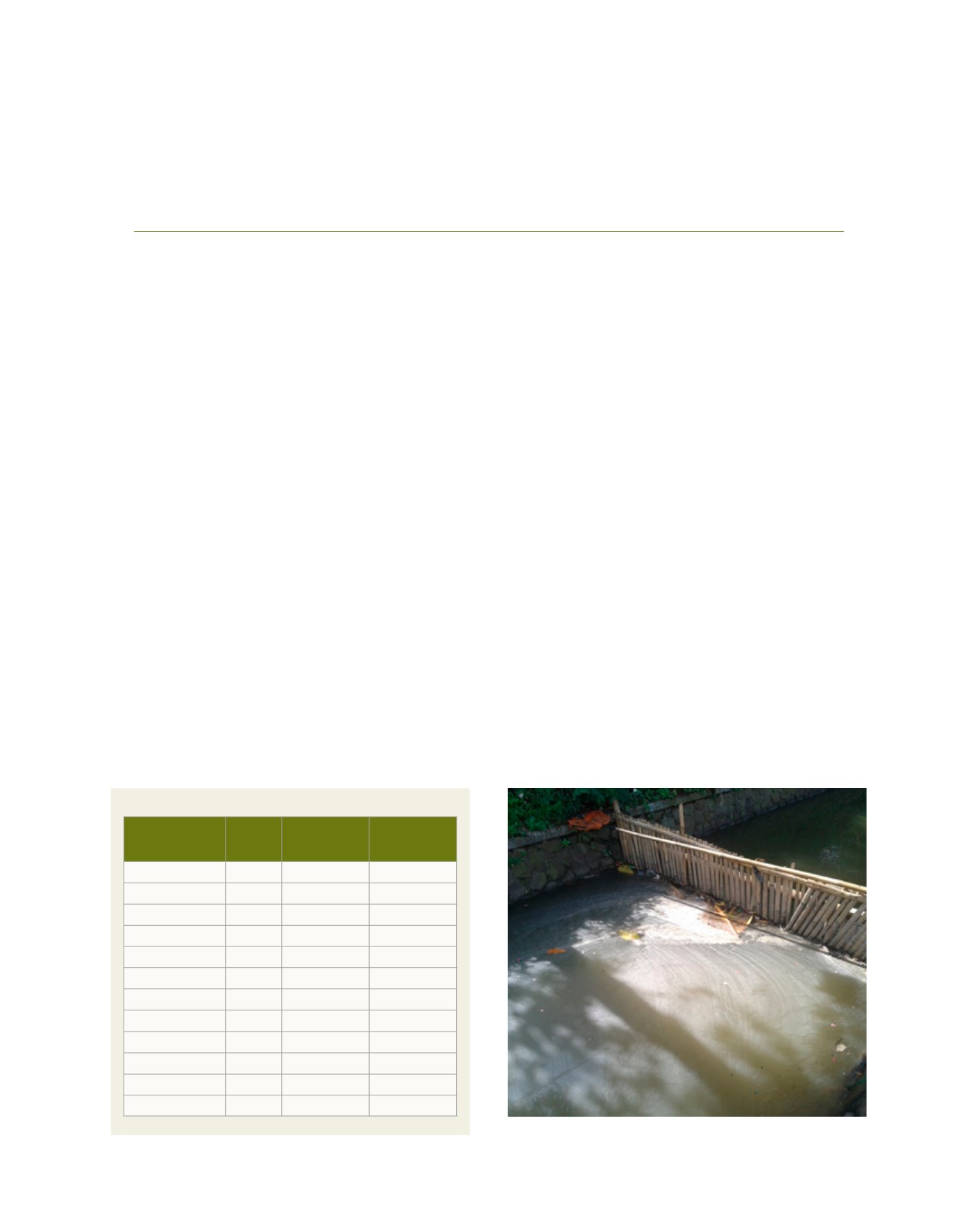

[
] 100
A B
et ter
W
or ld
Application of a wastewater treatment system
for river restoration with public participation
Dr Rofiq Iqbal, Assistant Professor, Head of Environmental Infrastructure Engineering,
Institute of Technology, Bandung, Indonesia
T
he Citarum River area, West Java, Indonesia has seen
rapid urbanization over the last 20 years, causing
an increase in polluted water, as well as flooding
by untreated household sewage, solid waste and industrial
effluents, affecting public health and threatening the liveli-
hood of the low income communities surrounding the river.
The Citarum has become one of the most contaminated
rivers in the world, although it continues to be used as the
main water supply, serving the daily needs of approximately
5 million residents. It is also the main source of flooding
due to the impact of climate change.
For this reason, the United Nations Economic and Social
Commission for Asia and the Pacific (UN-ESCAP), together
with the Ministry of National Development Planning of
Indonesia (BAPPENAS), have created a policy and strat-
egy, using the paradigm of green growth development, to
promote an eco-efficient water infrastructure for Indonesia.
The strategy has already contributed to increasing awareness
and advocacy of eco-efficient approaches in the development
of water infrastructure.
BAPPENAS requested that ESCAP continued its support
to develop an implementation roadmap as well as pilot
demonstration projects on integrated rainwater and waste-
water management systems by involving local institutions to
enhance the awareness of eco-efficiency at local government
and community levels.
The resulting pilot project was designed to support one
of the key national initiatives promoted by the Indonesian
government to ensure water security in the Citarum River
region. The project aims to strengthen the capacities of city
government officials and other local stakeholders to manage
the effects of climate change through the implementation of
capacity building programmes.
The Institute of Technology, Bandung (ITB) was chosen to
carry out the pilot project in Kampung Tanggulan, Bandung,
West Java. An initial assessment of the river showed a dete-
riorating stream quality, with biochemical oxygen demand
(BOD) up to 5.39 mg/l, and chemical oxygen demand (COD)
up to 50 mg/l. The river water in the vicinity of domestic
waste influent was more severe, where BOD reached up to
140 mg/l and COD up to 523 mg/l. One of the reasons for
deterioration was that domestic wastewater, especially grey-
water, was flowing directly into the river without treatment.
Another problem was the erosion of the river banks and
bed which resulted in shallowing, further rendering the
Parameter
Units
River water
quality
Water near
domestic
waste influent
Colour
Pt-Co
30
30
Turbidity
NTU
3.23
59
TSS
mg/
90
64 – 193
Temperature
oC
24.7
22.4
pH
–
7.47
7.34
COD
mg/l
50
111 – 523
DO
mg/l
8.56
8.51
BOD
mg/l
5,5
140
Total Nitrogen
mg/l
25.8
29.5
Total Phosphate mg/l P 11.05
10.2
Fe
mg/l Fe 0.48
0.72
Mn
mg/l Mn 0.144
0.159
River water quality
Image: IoT
Source: IoT
Condition of the river before work commenced
















